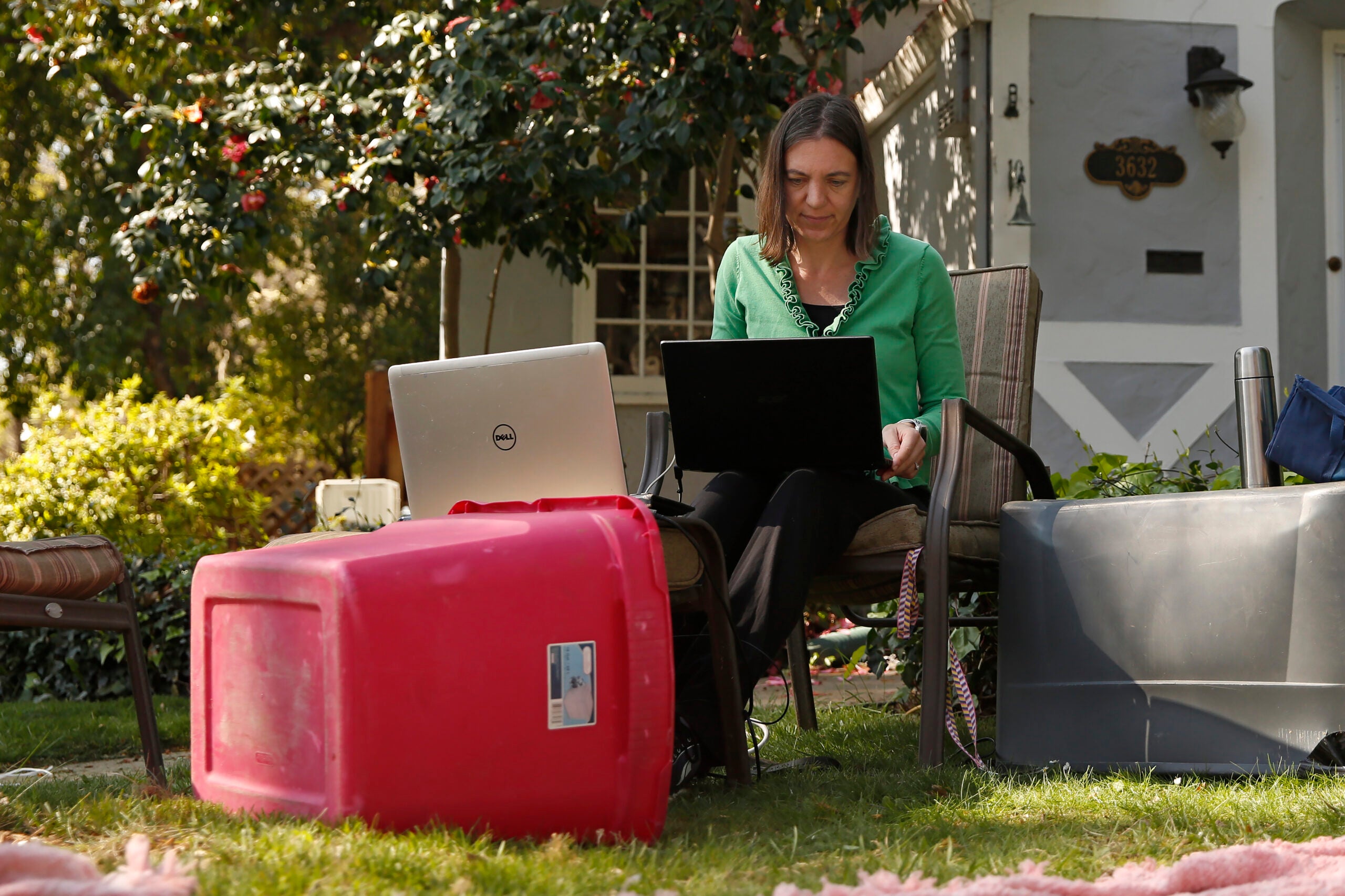COVID-19 has upended working environments for the vast majority of health care workers. For physical therapists in particular, that can mean meeting patients online or sending treatment plans via email.
Physical therapists Lori Thein Brody and Jill Thein Nisssenbaum are having to grow accustomed to the work-from-home lifestyle that has become a new reality for many. Used to a more active job that requires getting up and moving with patients, these physical therapists, like many of their patients, are now sitting and making phone calls for much of the day.
And that kind of inactivity can take its toll on a person’s musculoskeletal system.
Stay informed on the latest news
Sign up for WPR’s email newsletter.
“We’ve had a huge increase in people who are sitting in probably ill-designed, improperly designed workspaces,” said Thein Nissenbaum, an associate professor at the University of Wisconsin-Madison.
Sitting at those kinds of workspaces or even on couches can lead to shoulder, upper back and neck pain, or it can come in the form of wrist pain, Thein Nissenbaum explained.
To help ease the aches, here are some tips from Thein Nissenbaum and Thein Brody, an athletic trainer.
Set Up A Desk That Works
There are certain recommendations from the Occupational Safety and Health Administration (OSHA) that can be helpful to follow for properly setting up your desk.
The top of your monitor should be at or just below eye level, and your head and neck should be balanced and aligned with your torso. You’ll have fewer problems if you keep your shoulders relaxed, your elbows close to your body and your feet flat on the floor.
But even with these adjustments, we can still throw our bodies out of whack by reaching or leaning forward for our mouses.
That kind of reaching motion means we’re not allowing the chair to offer its full range of support, and we’re putting strain on our upper back and neck. To avoid that, roll or scoot your chair in close enough to your desk so that your upper arm forms a vertical line between your shoulder and elbow.
“You should just kind of be sliding or gliding your forearm on the arm of your chair to move your mouse,” Thein Nissenbaum said.
If you’re noticing pain in your wrist, and especially on the pinky side, hold off on blaming carpal tunnel syndrome, which typically only impacts your thumb, index and middle fingers. What’s more likely, Thein Brody said, is that especially right-handed people tend to put more weight on their pinky side of their wrist, which can cause irritation.
You can help this by adjusting your posture in a way that rotates your wrist to your thumb side, keeping your wrist flat.
Take A Lot Of Breaks
When we’re working from our offices, we’re frequently getting up to run to the printer, grab a snack from the break room, get more coffee, talk to coworkers, the list goes on.
At home, we need to continue taking frequent breaks, too, and aim for the same number of steps that we would normally take at work.
“Whether you know it or not, those interruptions … at work are probably helpful for you from a postural perspective,” Thein Nissenbaum said, noting that setting a timer to remind you to get up every hour can help.
Don’t Forget To Stretch
Stretching out your hip flexors — the muscles in front of the hips — is of particular importance in these new environments.
When we sit, our hips are flexed at 90 degrees. That means that the hip flexors, which include muscles that are attached to your lower back, shorten. And that can spell trouble for your lower back, Thein Brody said.
“If you spend eight hours sitting like that, those muscles are going to … pull on your low back,” Thein Brody said.
Standing up and stretching your back in the opposite direction will help to loosen up those hip flexors.
Wisconsin Public Radio, © Copyright 2025, Board of Regents of the University of Wisconsin System and Wisconsin Educational Communications Board.

